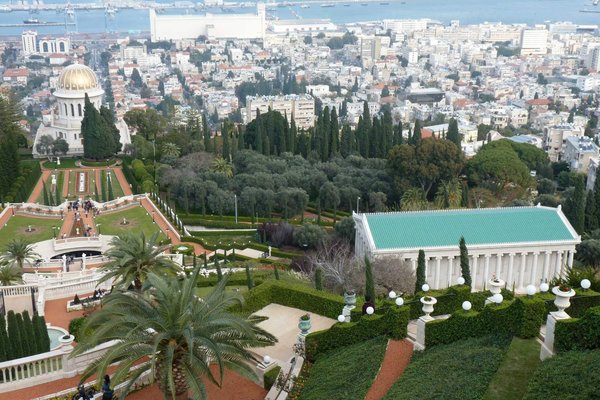Israel
Bahá’i Holy Places
The Bahá’i Holy Places in Haifa and the Western Galilee represent the Bahá’i faith and their pilgrimage tradition.
The Holy Shrine of Bahá’u’lláh and the Holy Shrine of the Báb are the most holy places of the Bahá’í faith. They are also directly linked to the faith’s two founders, originating from 19th-century Persia. The sites are an important place of pilgrimage for the millions of Bahá'ís around the world.
Community Perspective: The most visited among the 26 included monuments is the prominent Bahá’i temple on Mount Carmel in Haifa, with its impressive terraced gardens. The others are rarely visited and even harder to appreciate for outsiders to the faith. Solivagant has described the ‘problems’ associated with inscribing a site mostly for the value that believers placed upon it.
Site Info
Official Information
- Full Name
- Bahá’i Holy Places in Haifa and the Western Galilee (ID: 1220)
- Country
- Israel
- Status
-
Inscribed 2008
Site history
History of Bahá’i Holy Places
- 2008: Inscribed
- Inscribed
- 2007: Referred
- Re-consider its scope and put in place stronger protection
- Type
- Cultural
- Criteria
- iii
- vi
Links
- UNESCO
- whc.unesco.org
- Official
-
- ganbahai.org.il — Bahai Gardens
All Links
UNESCO.org
- whc.unesco.org — whc.unesco.org/
Official Website
- ganbahai.org.il — Bahai Gardens
News Article
- April 21, 2023 haaretz.com — Acre's Bahai Gardens Closes to Tourists After Municipality of Acre Refuses to Recognize It as Holy Site
Community Information
- Community Category
- Religious structure: Bahá'i Faith
Travel Information
Exact locations inscribed twice (or more)
Israel and Palestine Hotspot
Recent Connections
-
Administrative Seats of living Religions or Sects
The Universal House of Justice (The Bah…
-
Named after individual people
After Bahá'u'lláh -
Unusual Entry Requirements or Restrictions
In the Bahai Gardens visitors are allow…
Connections of Bahá’i Holy Places
- Individual People
-
-
Baha’u’llah
Had a summer house and died (1892) at the Mansion of Bahjí. He was buried at a shrine next to the mansion.
-
- Geography
- Trivia
-
-
Dubbed as another WHS
Ridwan Garden is dubbed New Jerusalem -
Registered when architect was alive
The terraced gardens in Haifa, which were built between 1990 and 2001, by Fariborz Sahba (1948 - alive)See en.wikipedia.org
-
Minority communities
Bahai -
More than 500 steps to climb
Bahai Garden - 700 steps (but only descent is possible for tourists) -
Modelled after
International Archives Building within the Shrine of the Bab, Haifa. Modelled after the Parthenon ("Designed to the proportions of the Parthenon" - Nom File). See
-
- Architecture
-
-
Domes
Golden dome in Haifa -
Gold Surfaces
Dome of the Shrine of the Bab -
Neoclassical architecture
-
- World Heritage Process
-
-
Exact locations inscribed twice (or more)
Contains House of Abbud, which is already inscribed in Old City of Acre
-
- Religion and Belief
-
-
Administrative Seats of living Religions or Sects
The Universal House of Justice (The Bahá’í Faith)
-
Holiest place
Shrine of the Bahá'u'lláh in Acre -
Sacred Mountains
Mount Carmel (North Slope included)See en.wikipedia.org
-
Sacred Forests or Groves
Ridwan Garden is an imitation of Paradise
-
- Human Activity
-
-
Man-made Terraces
Bahai gardens
-
- Constructions
-
-
Obelisk
Bahá’í Temples: Carmel West: Place of Revelation This is a small open space, where in 1891 Bahá’u’lláh composed the “Tablet of Carmel”, the charter of the Bahá’í world administrative centre. It is marked by an obelisk marking the site of a future temple.See en.wikipedia.org
-
Caravanserai
An ancient khan is located on the grounds of The Mansion of Mazra?ih and Ri v?n Gardens -
Mausolea
Mausoleum of the B?b in Haifa -
Prison
Includes Prison in Acre, where Bahá'u'lláh, His family and some 70 of His followers were imprisoned in the barracks from 31 August 1868 to 4 November 1870.
-
- Timeline
-
-
Built in the 20th century
Precise location for tomb determined in 1891... "The remains of the Báb were buried on March 21, 1909 in a six-room mausoleum made of local stone. In a separate room, the remains of `Abdu'l-Bahá were buried in November 1921. In 1929 three rooms were added to the mausoleum, and in 1949 the first threshold stone of the superstructure was laid by Shoghi Effendi. The construction was completed over the mausoleum in 1953" (Wiki)
-
- WHS Hotspots
-
-
Israel and Palestine Hotspot
Israel hotspot
-
- Visiting conditions
-
-
Unusual Entry Requirements or Restrictions
In the Bahai Gardens visitors are allowed only to descend the terraces and not to ascend them, an act reserved to Bahai worshippers alone. The visitors are accompanied by guides who make sure the visitors follow this rule.
-
- WHS Names
-
-
Named after individual people
After Bahá'u'lláh
-
News
- haaretz.com 04/21/2023
- Acre's Bahai Gardens Closes to Tou…
Recent Visitors
Visitors of Bahá’i Holy Places
- Adrian Turtschi
- Alberto Rodriguez Gutierrez
- Alexander Lehmann
- Alexander Parsons
- A. Mehmet Haksever
- Ammon Watkins
- AndreaTLV
- Anna Wludarska
- Ansitong
- Argo
- ArnaudFilloux
- arnaugir
- Artur Anuszewski
- Aspasia
- Assif
- Atila Ege
- Bamse
- BaziFettehenne
- bergecn
- Bernard Joseph Esposo Guerrero
- Bill Maurmann
- Can SARICA
- Cezar Grozavu
- Christravelblog
- Cody Ayers
- Corinne Vail
- Csaba Nováczky
- ctravel
- CynthiaW
- Daniela Hohmann
- Daniel Chazad
- Danieljbromberg
- dankir
- Danny L
- David Marton
- Deffra
- Dennis Nicklaus
- Dimitar Krastev
- Dirk-pieter
- Don Irwin
- Dorejd
- edstar500
- ellrabza
- Els Slots
- Eric Lurio
- Erik Jelinek
- Eva Kisgyorgy
- Evgenii
- Fan Yibo
- Fernweh
- Filip Murlak
- GabLabCebu
- Gary Arndt
- Geert Luiken
- George Gdanski
- Gjert
- Grzegorz Andruszkiewicz
- Harald T.
- Harry Mitsidis
- H Beswick
- Hughes1920
- Iain Jackson
- Ilya Burlak
- Ivan Rucek
- Jakubmarin
- Jana and Matt
- Jan Zimmermann
- Jarek Pokrzywnicki
- Javier
- Jawnbeary
- Jay T
- Jeanne OGrady
- Jens
- JL
- João Aender
- John Smaranda
- Jon Eshuijs
- Jon Opol
- Justin
- k2flake
- Karito Vies
- Kerékgyártó
- Kjlauer
- kjluebke
- Knut
- Krijn
- Kurt Lauer
- Lado Joel
- Lara Adler
- Lars Bogstad
- leoolkh
- Lucio
- Ludvan
- Luis Filipe Gaspar
- Maciej Gil
- Malgorzata Kopczynska
- Martin
- Martina Rúčková
- Marton Kemeny
- Matejicek
- MaYumin
- Michael Novins
- Mikan22
- Mikko
- Miloš Tašković
- miri2808
- Mkandasa
- Morodhi
- nan
- natlefebvre@hotmail.
- Nihal Ege
- Paola Laura
- Patrik
- Persian Globetrotter
- Petteri
- Philipp Leu
- Philipp Peterer
- Potsdamer
- pressdm
- Rahelka
- Ralf Regele
- Remski
- Roger Ourset
- Roman Bruehwiler
- Roman Raab
- S. Anril Tiatco
- Sclowitz
- Sergio Arjona
- Slavi
- sncjob
- Solivagant
- Sorel Americo
- Ssong.x
- Stanislaw Warwas
- stephanvermeulen
- Stijn
- Sutul
- Szabolcs Mosonyi
- Szucs Tamas
- Tamara Ratz
- Tarquinio_Superbo
- Thomas Buechler
- Thomas van der Walt
- Timonator
- tony0001
- Tony H.
- Traveling Girl
- Tsunami
- Valentina
- Vanessa Buechler
- Vernon Prieto
- Veronica
- voyager
- WalGra
- Walter
- Wojciech Fedoruk
- Xiquinho Silva
- YaroMir
- Yongcheng Liu
- zfish
- Zizmondka
- Zoë Sheng
- Zsuzsanna Forray
Community Reviews
Show full reviews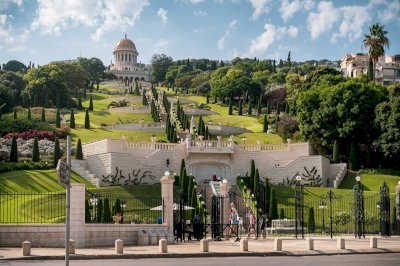
The World Heritage inscription of the Baha’i Holy Places emphasizes their deep spiritual value and the tradition of pilgrimage in the Baha’i faith. I am not convinced that it counts as Outstanding Universal Value, but the two main compounds mentioned on the inscription, one in the center of Haifa and one on the outskirts of Acre, also happen to be fine examples of formal gardening, which makes at least the one in Haifa a nearly must-see on any itinerary in Israel. I stopped by both in November 2019.
My expectations for a visit to the Haifa’s Baha’i Gardens included the key assumption that I would be able to enjoy walking in the gardens on my own – and although I had sufficient number of warnings from the interwebs and from my Israeli relatives that that was not the case, it came as a huge disappointment when I finally realized that I could not do that.
Baha’i Gardens in Haifa sit on a steep side of a mountain. The central part surrounding Shrine of Bab is open to visitors from 9am to 12noon daily, and there you can experience some of the gardens first-hand. You can access the shrine’s interior as long as you do not photograph anything therein (somewhat uniquely, the guard at the entrance demanded that I physically cover the lenses of my camera with a cap before coming in). It should be said that there is nothing of specific note to photograph inside the shrine anyway; …
Keep reading 0 comments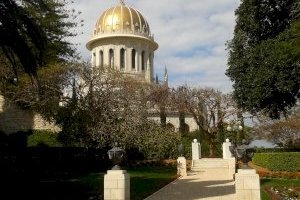
I will add nothing new with my review: This place is shiny and monumental, but it is only a sterile tourist trap. I did half a day trip to Haifa from Tel Aviv 3 years ago, and was very disappointed. Not only by the temple but also by the city of Haifa. Only positive thing I would like to stress was the magnificent view from the site towards the bay of Haifa, and a delicate atmosphere inside the shrine (at the entrance to the shrine, which si the most important place of this religion, a guide - handsome guy - told me the basic data about the religion and other useful information). Nevertheless, I would rather stay in Tel Aviv anyway. Only reason for me to visit Haifa again in the future would be the stay at the world-famous Technion Institute located furher uphill...
Keep reading 0 comments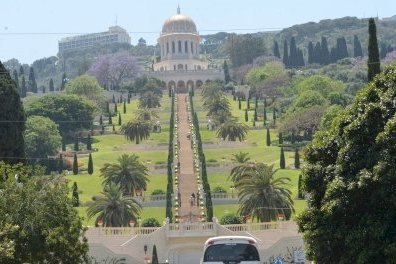
WHS#53
I visited Haifa on the way to the Galilee in April 2018, and obviously, I had to check out the Bahai Gardens the city is best known for. With a private driver-guide, I was able to see the gardens and the Shrine of Bab both from above and from below. Needless to say, it's a stunning sight to see, and there isn't really any place like this in the world. The gardens show some influence from Persia, where the religion was actually founded, but without the Islamic elements. The Shrine of Bahaullah in Acre seems to also have the same style. Part of the reason it looks so great and shining and pristine, however, is the reason why it might not be a very worthy WHS. The Shrine of Bab was completed in 1953, 55 years before it was inscribed, and the gardens only in 2001, 7 years before inscription. It is clearly a modern site, and although it has huge religious significance, doesn't actually have historic value. Sure, the many serial sites that trace the journey of the Bahai religion's proponents do have a history as an itinerary, but I'd think the sites in Iran and elsewhere should hold the same significance. The sites here in the Galilee are simply pilgrimage sites due to significant figures of the religion being buried here, but they aren't any different from the countless pilgrimage sites in Europe and the Holy Land. The shrine and its gardens make great tourist attractions, …
Keep reading 0 comments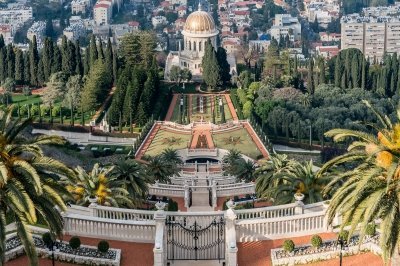
I have visited the Baha'i Holy Places twice now, and both times I've had limited access to the gardens in Haifa. Really just bad luck. The gardens are beautiful and are one of the top attractions for tourists visiting Haifa. At the top of the gardens, you get a great view of the entire city and the harbor. The view from the bottom of the gardens at night is spectacular and it is a great place to eat in the evening as well. Make sure to check before you arrive as to the operating hours of the garden and if there are any holy days or other special events going on. On my first trip I could only take photos through the gate. On my second trip, I could only visit a limited part of the garden.
Keep reading 0 comments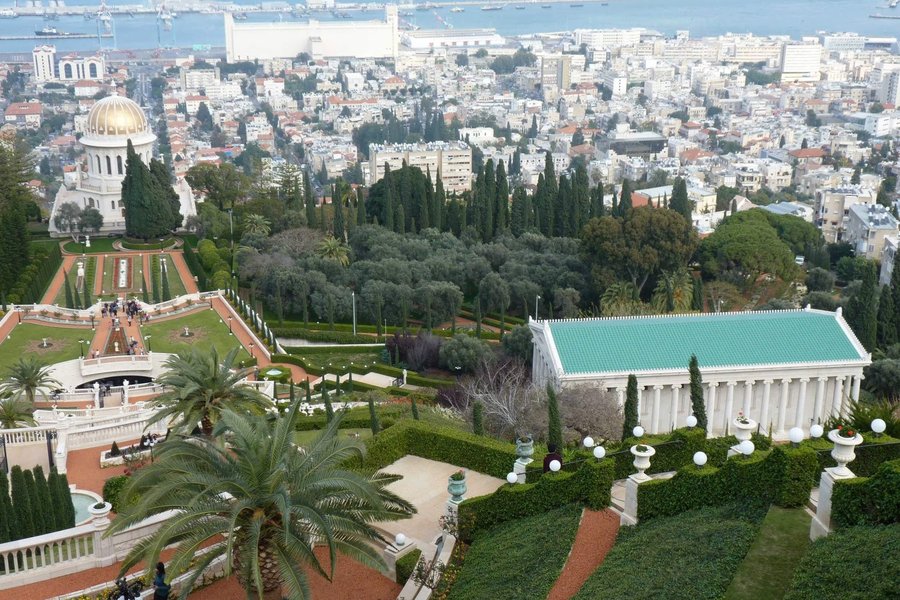
I visited the gardens and shrine in Haifa and I agree with the reviews below: There is a great view over the Haifa bay and the place itself looks spectacular, but I cannot see any OUV there.
In summary: it is a tourist trap, I can see reason of inscription only to attract the tourist for visiting of Haifa, that is perfectly located but do not offer anything that can be called as a world class site.
Keep reading 0 comments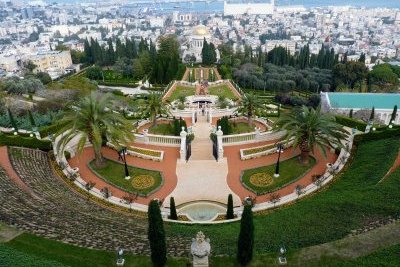
We had intended trying to fit in several of the 11 locations at Haifa and Akko within this inscription but, in the end, time constraints limited us to the North Slope of Mt Carmel and its structures - or such as non-believers are allowed to see/enter!! So this means the Terrace Gardens and external views of the Shrine of the Bab together with the “Arc” of administrative buildings which are situated next to the terraces (The Seat of the Universal House of Justice, Seat of the International Teaching Centre, the International Archives and the Centre for the Study of the Sacred Texts).
The Terraces were built as recently as 1990-2001 whilst the Arc buildings date to the 1950s through to the 1980s. The shrine itself dates back to an original “simple” building from 1899-1909 but was given its current grandiose appearance with gold dome and Corinthian columns between 1948/53. There is no doubt that the terraces are “impressive” for their grandiosity, climbing some 225 metres in 1 km, particularly when seen from the bottom (at top end of Ben Guirion St, Haifa’s - main restaurant area). Having seen them from the bottom in the evening (visitors are allowed to ascend just to the first “balcony”) we went to the top the next day and planned to take the noon English tour down through the gardens. There you can again freely descend to the first “balcony” without taking a “tour”. The view from the top over Haifa is fine but …
Keep reading 0 comments
I had bad luck with my visit to Baha'i gardens and the Shrine of the Bab in Haifa. Gardens are closed if it's rainy day (because the stairs are really slippery when they're wet) and it was raining every morning of my stay so the gardens stayed closed. The shrine was also under construction so the site wasn't that impressing looking.
In my visit to Akko I took the local bus to Bahje house and the Baha'i gardens around it. The house, which was the home of Baha'ullah, is open only in the morning (for Baha'is it's always open) so it was closed when I visited it in the afternoon. You get the see the gardens outside which were very clean and straight like the ones in Haifa. Doorman at the gate gives you an information leaflet in your own language (he said they have it in every language, I doubt it). The Bahje house looks like any other Mediterranean mansion built in the 1800s. More interesting was to watch the pilgrims going to see the holiest place of their religion. I think that if you like gardens this place is worth of visit, by bus it was only 10 minutes from Akko.
Keep reading 0 comments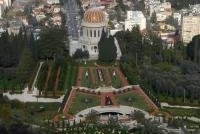
I only visited the most famous part of this complex: the Shrine of the Bab and the Persian gardens which surround it (in Haifa). It is a peacefully, pretty place. The gardens are terraced, which makes them look neat from both above and below. A profusion of purple a green colours greet the visitor. The gardens are great, and make good use of the path in the artistic beauty, something not seen everywhere. The view from the gardens over Haifa, and the plains and mountains of Israel is one of the best views you will ever find in Israel.
On to the Shrine, which pales in comparison to the gardens. It is a nice, elegant building: but not spectacular, it would not top anyones list of most amazing buildings. However it is situated in the best possible spot in relation to the gardens. This makes a complete picture of loveliness. This site deserves its inscription on the World Heritage List mostly on its importance to the Baha'i Faith, not its architectural merit (although I think the garden could hold up to the best in the world).
This site however is quite easy to visit while one is in Israel. Israel is a small country, and Haifa is only 1 hour from Jerusalem, and less from Tel-Aviv. Israel is a wonderful country and I highly recommend a visit!!!!
Keep reading 0 comments
The only Bahai site in Israel I've been to is the Bahai Temple in Haifa. It's situated atop the Carmel and overlooks the harbour and the German Colony. The gardens follow the "falling" type, meaning they literally cover the entire sloap of the mountain. You need to reserve a guided tour in which you get to hear about the Bahai faith. This is the only way to visit the site but these visits cost nothing. Disappointingly, you are only allowed to step downhill as stepping uphill is reserved for Bahai pilgrims.
Keep reading 0 comments
